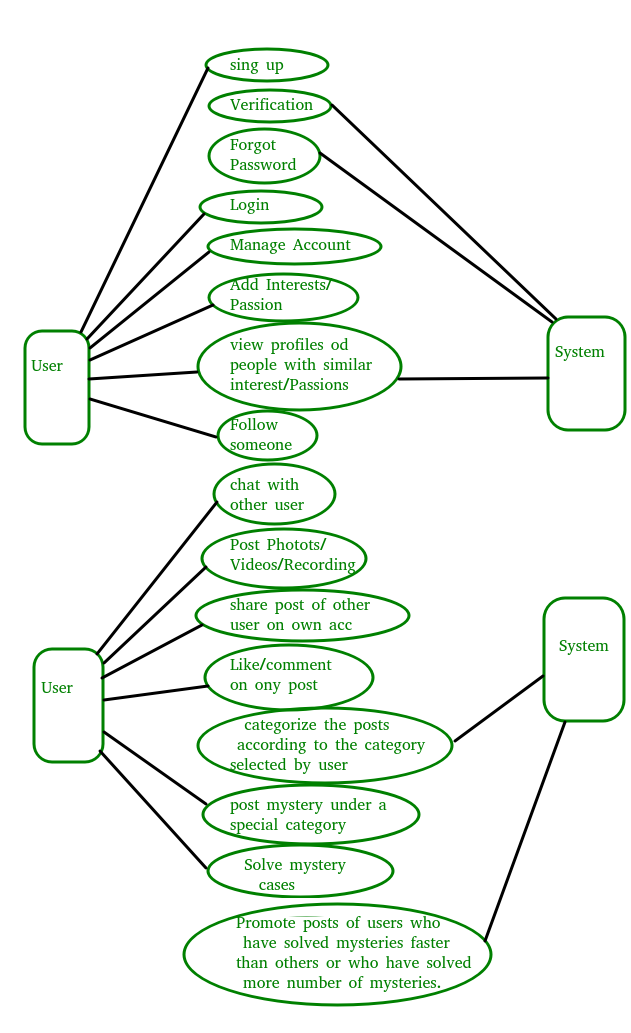Req_engg7_Developing_use cases_Mscit2
Good evening Students!! Today we will learns the process of developing usecases:
Developing Use cases
Use cases:
In software and systems engineering, a use case is a list of actions or event steps, typically defining the interactions between a role (known in the Unified Modeling Language as an actor) and a system, to achieve a goal. The actor can be a human, an external system, or time. In systems engineering, use cases are used at a higher level than within software engineering, often representing missions or stakeholder goals. Another way to look at it is a use case describes a way in which a real-world actor interacts with the system. In a system use case you include high-level implementation decisions. System use cases can be written in both an informal manner and a formal manner.
The advantages of Use cases include:
-
The list of goal names provides the shortest summary of what the system will offer
-
It gives an overview of the roles of each and every component in the system. It will help us in defining the role of users, administrators etc.
-
It helps us in extensively defining the user’s need and exploring it as to how it will work.
-
It provides solutions and answers to many questions that might pop up if we start a project unplanned.
The main parts of an use case are :
Use Case: What is the main objective of this use case. For eg. Adding a software component, adding certain functionality etc.
Primary Actor: Who will have the access to this use case. In the above examples, administrators will have the access.
Scope: Scope of the use case
Level: At what level the implementation of the use case be.
Flow: What will be the flow of the functionality that needs to be there. More precisely, the work flow of the use case.
Some other things that can be included in the use cases are:
-
Preconditions
-
Postconditions
-
Brief course of action
-
Time Period
We can understand the process of developing use cases by this example.Various actors in the below use case diagram are: User and System 
The main use cases are in the system and the diagram illustrates on how the actors interact with the use cases.For eg. During Sign Up, only users need to interact with the use case and not the system whereas when it comes to categorizing posts, only system would be required.